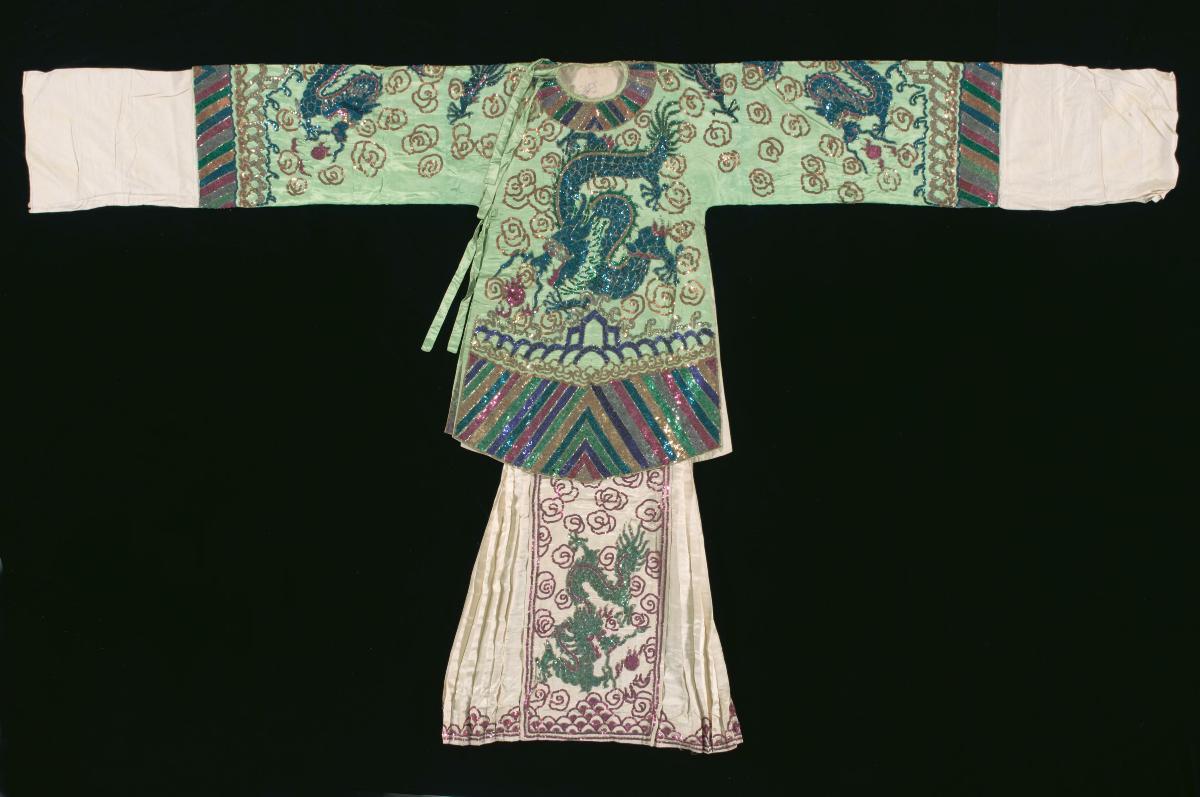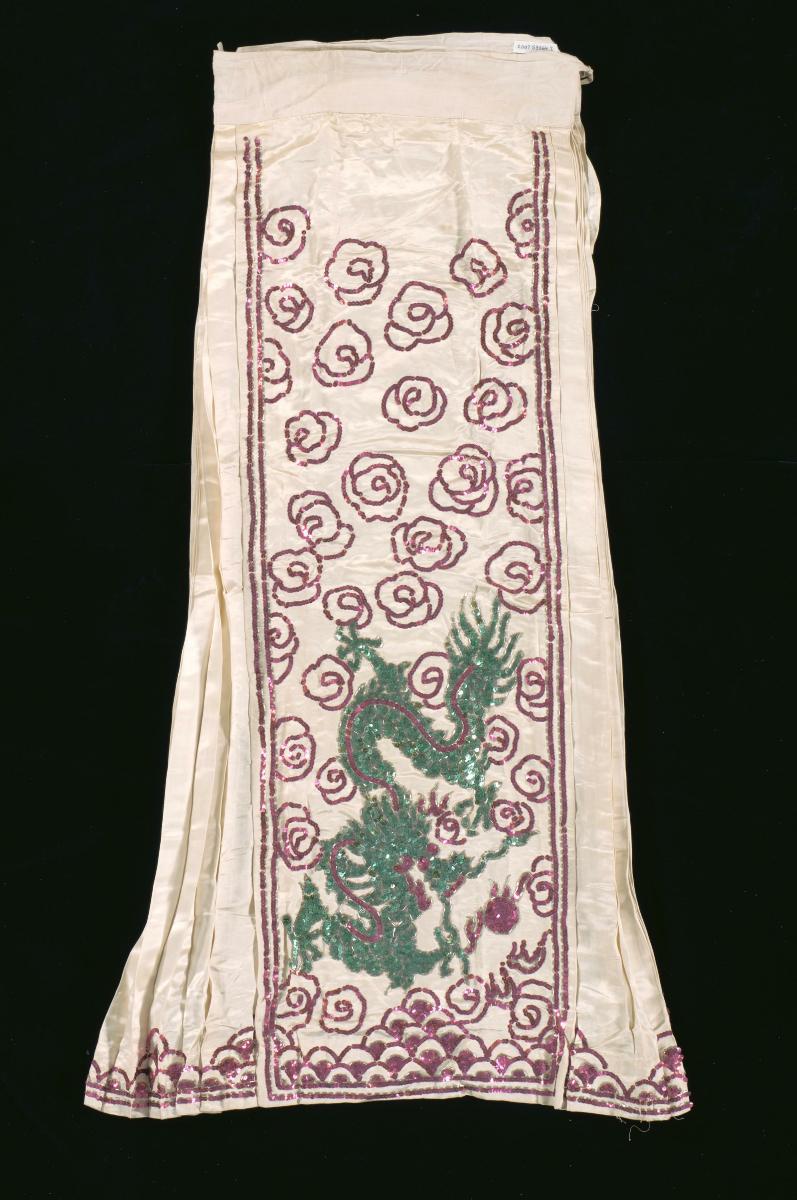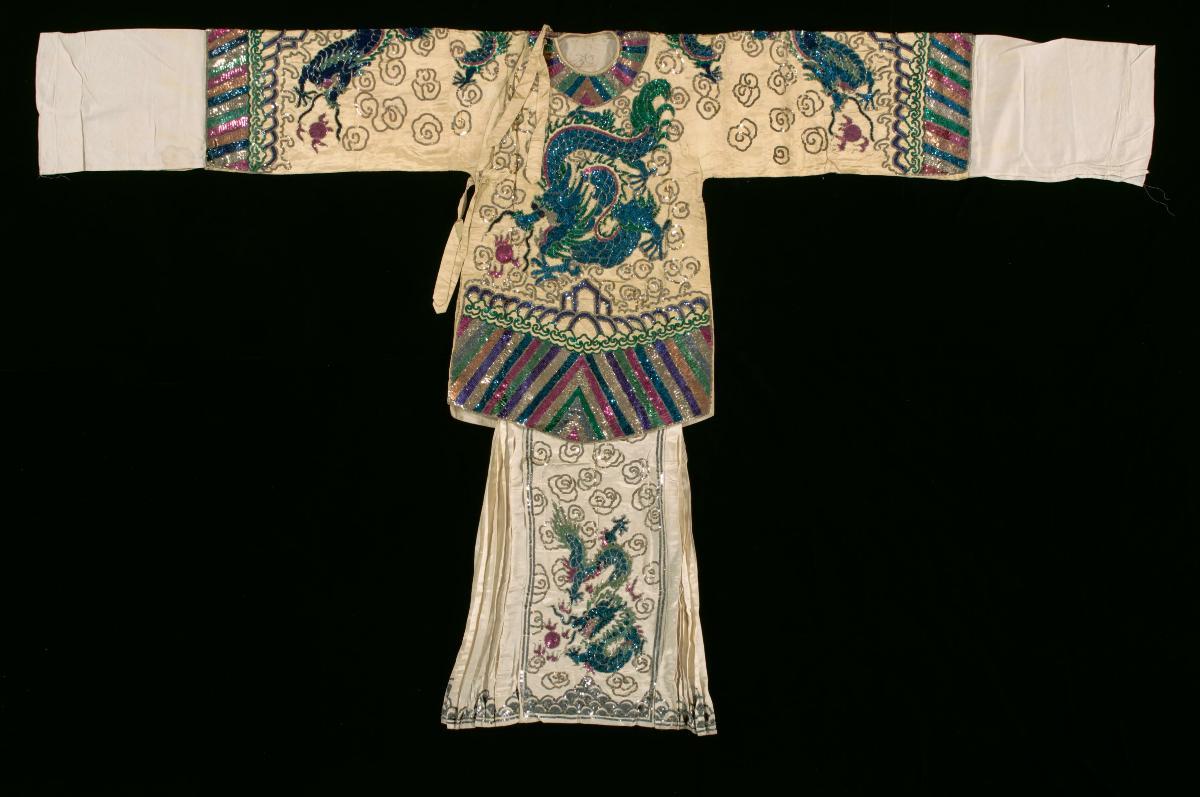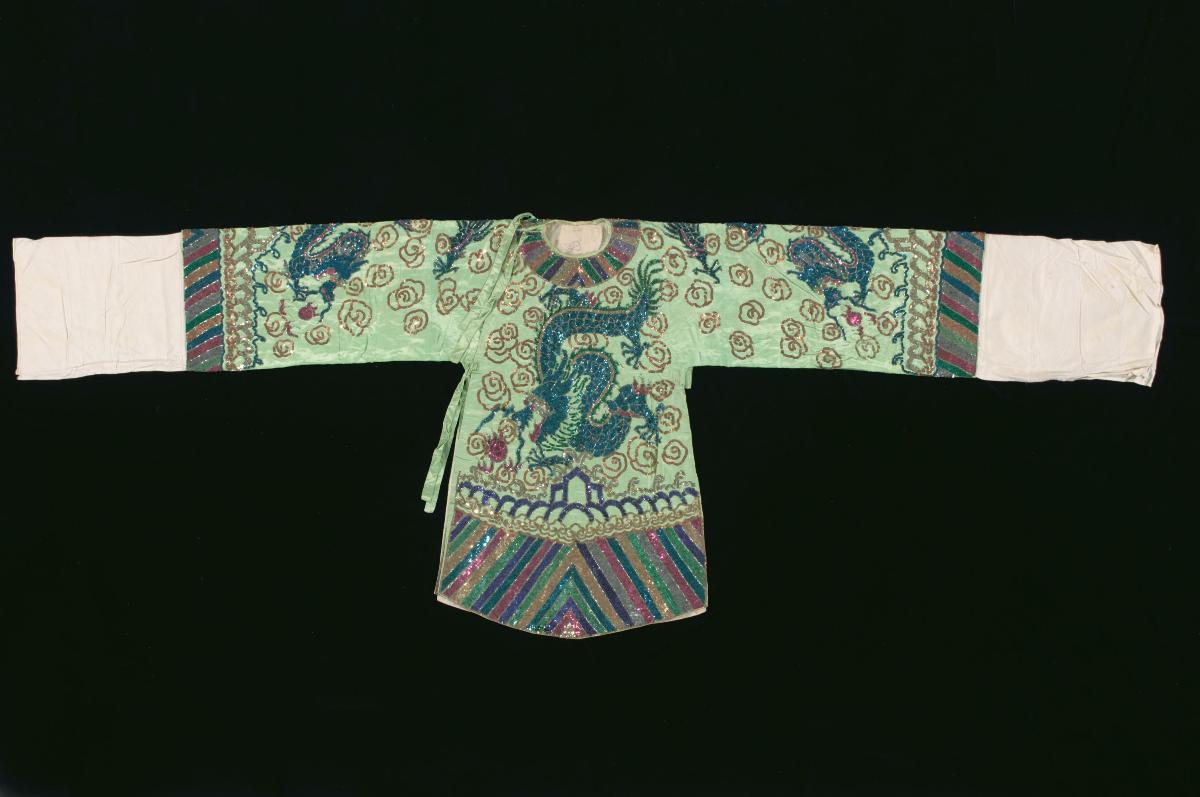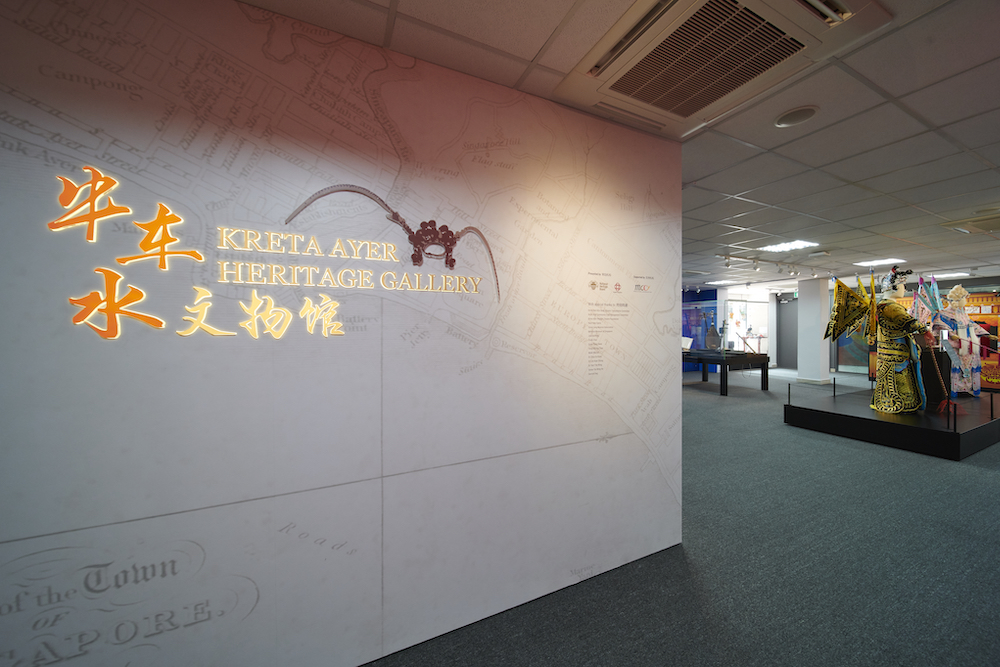This is a Chinese opera costume that belonged to the Kim Eng Teochew Opera Troupe. The Kim Eng Teochew Opera Troupe was founded in the mid-1980s by Mr. Chua Hock Kee, who was a former child performer and member of the Sin Yong Hua Heng Troupe. Originally founded in 1827 in Swatow (present day-Shantou), southern China, Sin Yong Hua Heng was one of the most prominent and oldest Teochew opera troupes in Singapore. In its heyday, the troupe had as many as 60 cast and crew members. The troupe underwent a management change in the 1980s and staged its final performance in 2001.Chinese opera has its origins in Shang dynasty rituals and shamanistic worship but has evolved over time to become an established, stylized dramatic art form. Chinese opera was brought to Singapore by the Chinese immigrants and was referred to locally as Chinese ‘wayang’, the latter being a Malay term that denotes a theatrical or dramatic performance. It was especially popular from the 1880s to the 1930s, as it was an affordable source of entertainment for the masses. Wealthy Chinese families were also known to be patrons of opera troupes, engaging them for private performances in their residences. Typically, Chinese operas were performed on makeshift stages near temples or in temple compounds as they served as a form of entertainment to the gods and were thus essential to the religious festivities. Performances were also staged in opera theatres. They were constructed as early as the 1880s and largely clustered in the Chinatown district. The popularity of Chinese operas waned drastically from the 1950s with the advent of film and television. Nevertheless, they remain an integral part of Singapore’s cultural landscape today.





